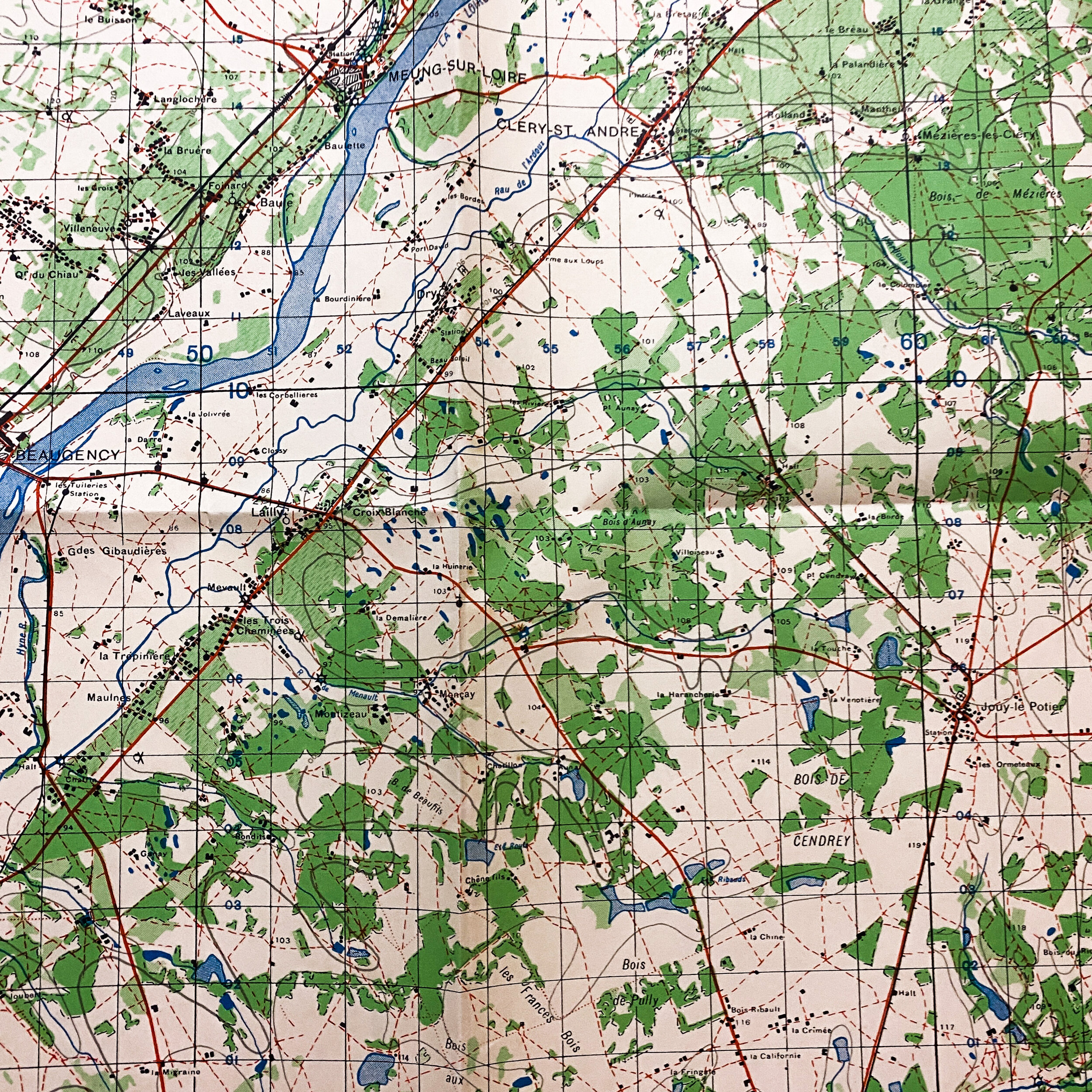1944 First Edition War Office Map of Beaugency France (20,000 German's Surrender) Map



















1944 First Edition War Office Map of Beaugency France (20,000 German's Surrender) Map
Geographical Section, General Staff, No. 4250 Published by the War Office 1944, 1st Edition. This is an rare full color single side grid U.S. infantry paper map of the historic ‘Beaugency’ France. It is said here that a miracle occurred on Loire River when 20,000 German soldier’s crossed and surrendered to Allied and U.S. forces in Beaugency. The 1944 map is gridded for triangulation and shows roads and foot paths as well as other major and minor building in the German occupied area. This map would have been used by the infantry soldier for moments and objective locations across France against the Germans.
In September of 1944, during the Second World War, a small miracle occurred on the Loire River near Beaugency, France. Twenty-four Americans from the 7th Army patrolled the southern banks of the Loire, while 20,000 Germans of the Luftwaffe and Wehrmacht were on the northern banks of the river.
They had come from the Spanish borders attempting to slip through a gap at Belfort. The 7th Army had closed the gap from the south and the 3rd Army from the west and the north. Believing they were cut off and surrounded by large numbers of Americans, the German commander, Erich Elster, began to seek a method of surrender on September 8, 1944.
That same day Lt. Samuel Magill, the leader of the intelligence and reconnaissance patrol on the southern bank of the Loire River, sent two of his 24 soldiers to the German side of the river. The other 22 military policemen were split into smaller groups to patrol 40 miles north and south and almost 30 miles east and west on the southern bank.
Later, two maquis, local freedom fighters, approached Magill to tell him the German commander was willing to discuss peace. Magill met Elster, who wanted two battalions of Americans to cross the Loire and fake a battle to preserve his honor. Magill refused, but did contact the 9th Air Force, requesting large numbers of planes to fly over the area while negotiations continued. If an agreement was reached, he would display a white patch on his vehicle and a yellow patch if there was not an agreement. Elster was impressed by the air power and agreed to discuss terms.
On September 10, Magill, his driver, Pfc. Ralph Anderson, a Belgian officer, and Elster and his aide drove through Chateauneuf sur-Cher, which was still under German control. People were confused to see an American flag and a German officer. The officers went on to Essaudan, and an agreement was reached.
Elster was to bring his army in three columns to the river and lay down all arms in the formal surrender. Since it would take several days to process the 20,000 Germans as they crossed the river, they would be allowed to keep small weapons to defend themselves against roving maquis who might not know about the arrangements.
On September 17, 1944, the German commander turned over his pistol to Robert Macon, the 83rd Division commander.